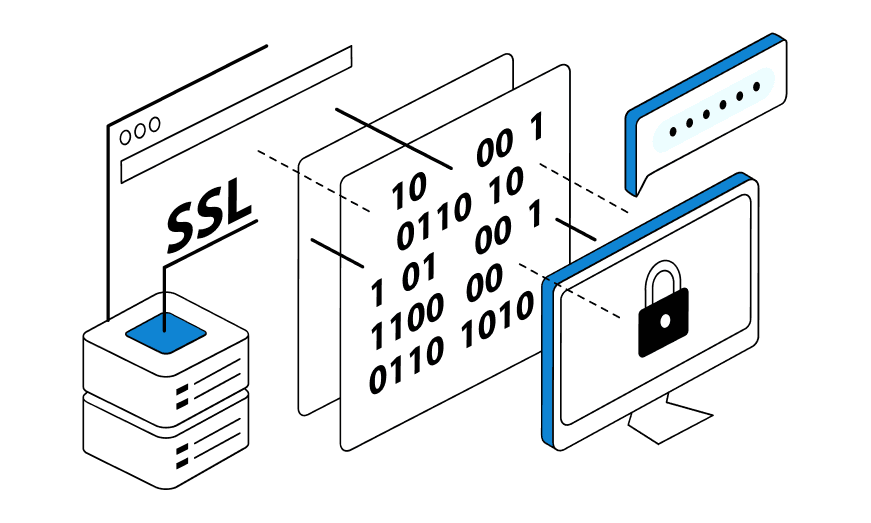
Modern marketing has long ceased to be “broad-based.” Companies that achieve real results work not with an abstract audience, but with specific customers. Personalization, automation, and analytics have become key words in growth strategies. And all this is impossible without CRM marketing.
In this article, we will explore what CRM is in marketing, what opportunities it opens up for business, and why CRM marketing is not just a trend but a pressing necessity. In addition, we will touch on the topic of tools that allow you to enhance CRM campaigns: for example, proxies for marketing research that help collect competitive data, conduct price monitoring, and test hypotheses without the risk of being blocked.
What is CRM marketing and why is it necessary?
CRM in marketing is customer relationship management based on data analysis. CRM (Customer Relationship Management) records all points of contact between the customer and the company: purchases, inquiries, responses to mailings, behavior on the website, and even phone calls. Marketing through CRM turns this data into targeted campaigns that hit the mark.
CRM marketing allows you to do more than just send out mass mailings — it helps you understand who to send a specific offer to and when, so that it works. This approach saves money, increases conversion rates, and strengthens customer loyalty. Key features of CRM marketing:
Segmentation of the audience by behavior, interests, geography, and purchase history.
Automatic mailings and trigger emails: for example, when a customer abandons their shopping cart or on their birthday.
Personalized promotions and recommendations.
Performance analytics at the individual customer level.
Integration with online stores, payment systems, call centers, and messengers.
In the following sections, we will look at how CRM marketing helps businesses increase profits, as well as the role proxies play in marketing research when preparing campaigns and analyzing competitors.
What tasks does CRM marketing solve?
To understand what CRM marketing is, it is not enough to limit yourself to a technical explanation. Yes, CRM marketing stands for Customer Relationship Management. But in essence, it is a powerful strategic system in which technology, analytics, and business processes are combined for one purpose: to increase profits through better customer service. Below, we will look at the key tasks of CRM marketing, as well as the principles on which this model is based.
Improving customer service quality
One of the main tasks of CRM marketing is to collect and use as much information as possible about each customer. Knowing their purchase history, preferences, and previous interactions allows you to build a truly high-quality dialogue, avoiding mistakes and duplication.
This is the foundation of trust and brand reputation. According to the principles of CRM marketing, the customer should not feel like part of a flow — their experience should be personal.
Creating personalized offers
Modern CRM marketing tools allow you to create segments based on dozens of parameters, from birthdays to email newsletter behavior. This opens up opportunities for targeted offers: discounts, bonuses, recommendations. This approach significantly increases response rates. For example, the system can automatically remind the customer to repurchase consumables or offer a set to go with a recently purchased product.
To test such scenarios in competitive markets, companies are increasingly using proxies for programs — tools that allow them to work with external data without the risk of being blocked.
Increasing conversion based on customer data
Analyzing customer data allows you to find patterns: who buys more often, when, and at what price. This makes it possible to optimize the funnel, advertising messages, and even product offerings.
CRM systems record everything from opening an email to responding to a promotion. This turns marketing into an exact science rather than a guessing game. For large-scale campaigns, you can’t do without reliable collection tools — for example, a proxy checker allows you to quickly test proxies before mass analysis of external platforms.
Automation of communications and campaigns
One of the most noticeable effects of implementing CRM marketing is automation. There is no longer any need to manually send reminders, promotions, or greetings. The system does everything itself: based on triggers, schedules, or behavioral scenarios.
This saves team resources and eliminates the human factor. At the same time, the customer still receives a personalized and relevant message.
Improved customer retention and reduced churn
CRM marketing allows you to not only attract but also retain customers. The system can identify “cooled” buyers in advance and launch a reactivation chain: a personal discount, a letter from a manager, an offer of a bonus for returning.
By understanding the behavior patterns of its audience, a business can anticipate rather than merely react. To prepare such scenarios, especially based on external analysis, it is worth purchasing a proxy for programs—a secure and flexible way to access data.
Advantages and disadvantages of CRM marketing
Like any business concept, CRM marketing has its strengths and weaknesses. Before implementing it into the company’s overall strategy, it is important to soberly assess the real possibilities and potential difficulties of its application.
Advantages:
- Personalization on a new level. The system knows exactly when, to whom, and what to offer. This increases customer trust and encourages repeat purchases.
- Increased efficiency. Automated communications and precise segmentation reduce costs and increase marketing effectiveness.
- Transparent analytics. You get clear data on each customer: who opened the email, who clicked, who bought — and you can make decisions quickly.
- Customer retention. Reactivation scenarios help bring back inactive users, reducing churn.
- Integration with other systems. Modern CRM systems can be easily integrated with CMS, payment services, call centers, and messengers.
Disadvantages:
- High entry threshold. To implement a full-fledged CRM marketing concept, you need resources: time, budget, and specialists.
- Dependence on data quality. Poor-quality or outdated data sharply reduces the effectiveness of automation.
- Risk of customer overload. If you overdo it with messages, personalization can become intrusive and cause irritation.
Thus, CRM marketing works effectively only if it is integrated into the overall development strategy of the company, supported by management, and based on clearly structured processes.

How to choose a marketing management system in CRM
When it becomes clear that CRM systems for marketing are not just a passing trend but a tool for growth, a logical question arises: which system should you choose?
There are many options on the market, but not all of them are suitable for marketing tasks. Below are the key selection criteria:
- Functionality. The ability to segment the database, launch automatic mailings, configure trigger scenarios, and integrate with advertising channels.
- Analytics. End-to-end analytics, UTM tag support, funnel building, return on investment assessment.
- Integrations. Connection to CMS, payment systems, messengers, telephony.
- Scalability. CRM should be able to handle 1,000 customers and 100,000 customers without losing performance.
- Convenience. Simple interface, accessible support, training materials.
Popular CRM marketing management solutions include HubSpot, Salesforce, RetailCRM, Bitrix24, and Zoho CRM. But no matter which platform you choose, without a clear concept and understanding of the tasks at hand, it will not deliver the desired results.
CRM is not just a program, but a living ecosystem. Its effectiveness depends on how well you can analyze data, adapt your strategy, and develop communications with customers.
FAQ
1. How to use CRM marketing to increase LTV without intrusive mailings?
- Focus on trigger scenarios: interest-based offers, reminders at the right moment, and useful content instead of frequent mass mailings.
2. Why can CRM system integration fail and how can this be avoided?
- The main reasons are team unpreparedness, lack of strategy, and poor-quality data. Start with a minimum viable model and train your employees.
3. Is it possible to do without CRM marketing in e-commerce and not lose customers?
- Yes, if you have 10 customers. But when scaling without CRM, you lose personalization, control, and up to 30% of repeat sales.
4. How can you automate repeat sales with CRM in marketing?
- Set up triggers based on the timing of the next purchase, automatic recommendations, and “try again” offers. This does not require manual intervention.
5. What are the most common mistakes made when segmenting a CRM database?
- Superficial segmentation (based only on gender and age), forgotten filters, and ignoring behavioral data all reduce the effectiveness of campaigns.
6. How can CRM marketing and analytics tools be linked to increase sales?
- Integrate CRM with Google Analytics, BI systems, and e-commerce metrics. This will allow you to accurately track the customer journey and adjust your strategy in real time.









